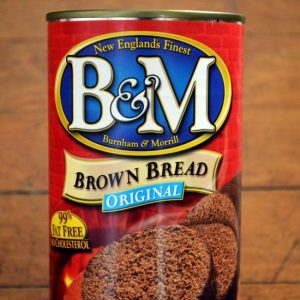Salt: It’s a great preservative and adds years to the shelf-life of foods. Note that some of the salty canned goods below will last for up to five years — and maybe more.
Alcohol: It will evaporate so make sure it’s in an airtight container but it’s a great preservative. Concentrated alcohol can destroy small organisms like bacteria. As well as cheering people up, it can also be used to preserve fruit, or be applied to small wounds.
Nuts: While they are full of nutrients, they don’t last well and will go rancid after 3-6 months. Ignore lists that suggest them.
Brown whole wheat flour: It contains wheatgerm which causes it to go rancid more quickly than white flour. If you intend to keep flour, it’s time to invest in oxygen absorbers and a calculator! (See our piece on oxygen absorbers here.)
Brown rice: Same story – the husk is full of wheatgerm and will go rancid quite quickly. White rice however, if kept away from damp and bugs, can last for decades.
Corn meal: The best ground grain to store is corn meal which will keep for years, and at least a year beyond its expiration date. And if you can keep it in a freezer, it will last 3-5 years past that date. If stored in mylar with oxygen absorbers there is no reason for it to go off. (Don’t eat if moldy, or there are signs of bugs.) Corn is a fantastic survival food because, if stored correctly, it will last for decades.
Coffee: Beans will keep for a few years. For survival, go with dried instant coffee. It’ll outlive you, especially if you can keep it frozen.
Bread: How about some cans of brown bread? It’s a New England thing and t hey last for many years. In an emergency it’s a great comfort food that packs calories. B&M bread is made from cornmeal, wheat and rye flours, and molasses.
hey last for many years. In an emergency it’s a great comfort food that packs calories. B&M bread is made from cornmeal, wheat and rye flours, and molasses.
Pasta: Dried box pasta will eventually go off but it can take years if it’s saved in a dark, dry environment. Keeping it in the fridge doesn’t affect it. You will be able to smell if it has gone off, but there’s not must that can go wrong with dried pasta. Don’t eat it if you can see mold, which can occur if it gets damp. Same applies if it’s changed color or you can see bugs have been at it. To guarantee it’s freshness, keep it in the mylar bag with oxygen absorbers described here.
Oils: These will go off in a heartbeat, especially once opened. And they really stink. You will do better to store fats like Crisco and coconut fat which will keep for a few years if stored in a dark, dry place. As you can freeze Crisco I suggest you package it up into amounts you might regularly use like a cup, so that you’re not continually freezing and refreezing the can.
Boxed goods: Cereal, sugar, rice will all go off if not stored in an oxygen-free container. See whole wheat flour above! However, those single-serve packets of oats will stay good for a couple of years.
Corned beef hash: It’s a cheap canned option that’s full of fats and salt. Properly stored, unopened canned corned beef hash will generally stay at best quality for about 3 to 5 years, although it will usually remain safe to use after that. The salt is the key to its long shelf life.
Honey: It lasts for millennia. If it goes hard, warm it and it will return to its liquid state. It’s also great for burns and wounds as it is anti-bacterial. And it’s delicious. In my experience, a plastic container may collapse on honey – like the bear shaped ones – so try and keep your emergency supply in glass.
Spam: The perfect apocalyptic foodstuff. There’s so much salt in it it will keep for years, although be careful if you have the key-open variety as the seal can easily be compromised. That’s a good thing to be aware of in canned goods. Ring-pulls do not have the integrity of cans you need to open with a can opener.
Ramen Noodles: Spurn them now but in an emergency you’ll love the taste, the warmth and the energy.
Pemmican: Native Americans invented this meaty, protein-packed snack. It’s made from dried meat (usually buffalo, elk or deer) and rendered fat with added ingredients such as wild berry for flavor. When traditionally prepared with all the moisture removed, pemmican sticks are shelf stable more or less forever. Like its cousin jerky, it’ll probably need some reconstituting in a meal, but it makes a great snack.
Dried beans: These are good for decades. They may lose some of their flavor and taste but so long as they aren’t moldy or smelly – you should be good to go!
Tomatoes and fruit: Be careful. You think they’ll last for ever in a can, but the acid can eat away at the metal. Always check the can.
Vegetables: For some produce, the nutrition in canned foods is even greater than for fresh. According to the USDA, which likes to play it very safe, high-acid canned goods, like tomatoes and citrus fruits, will keep for up to 1½ years. Low-acid canned goods—that’s pretty much everything else, including vegetables, (and meat, and fish) —will last for up to 5 years. If stored in a dry, dark place they will probably last much longer. Get veggies with lots of vitamins like spinach.
This guy does a good video on this subject:

